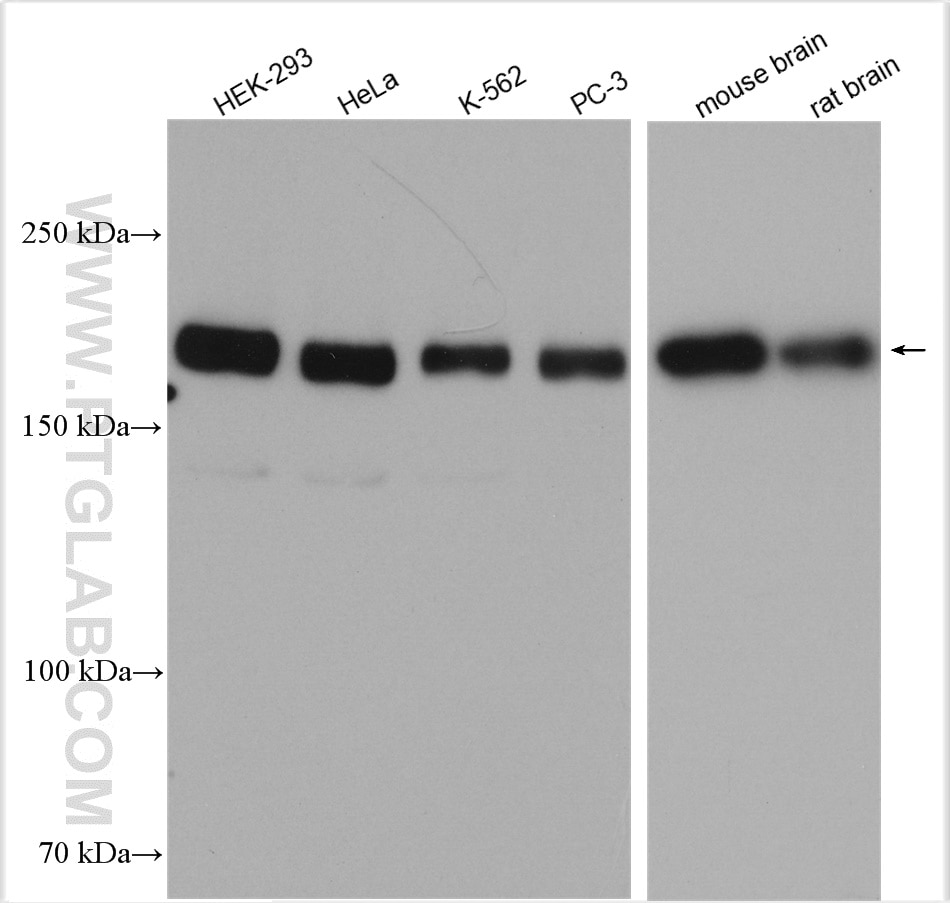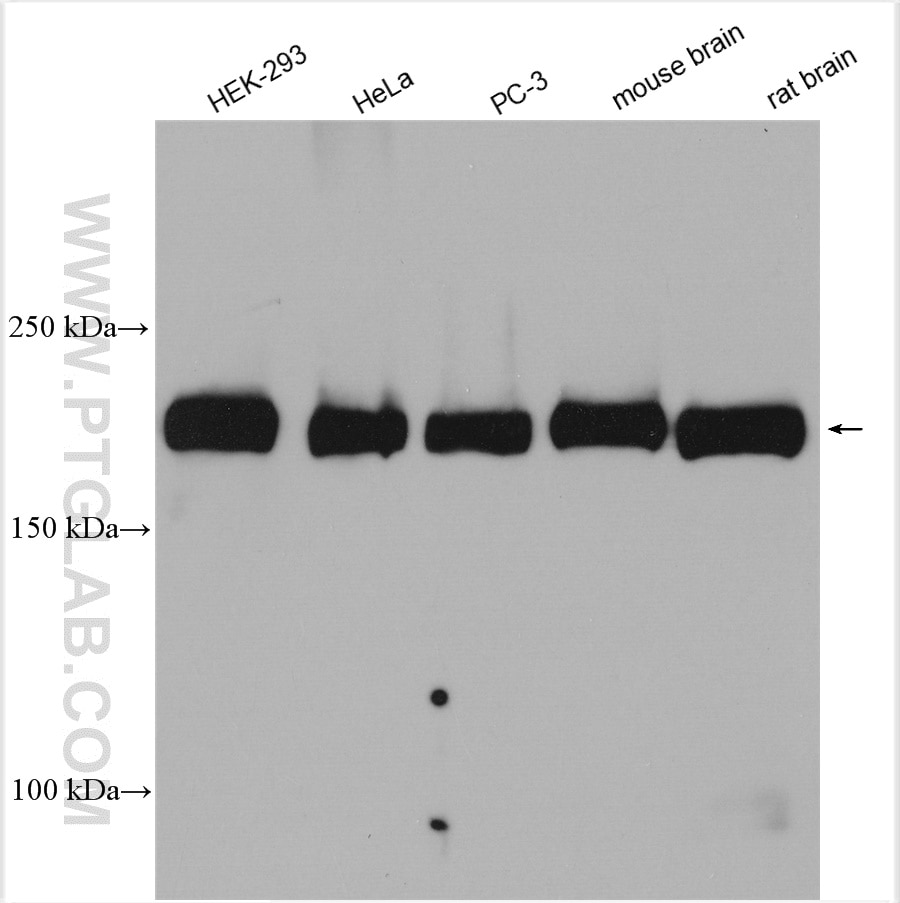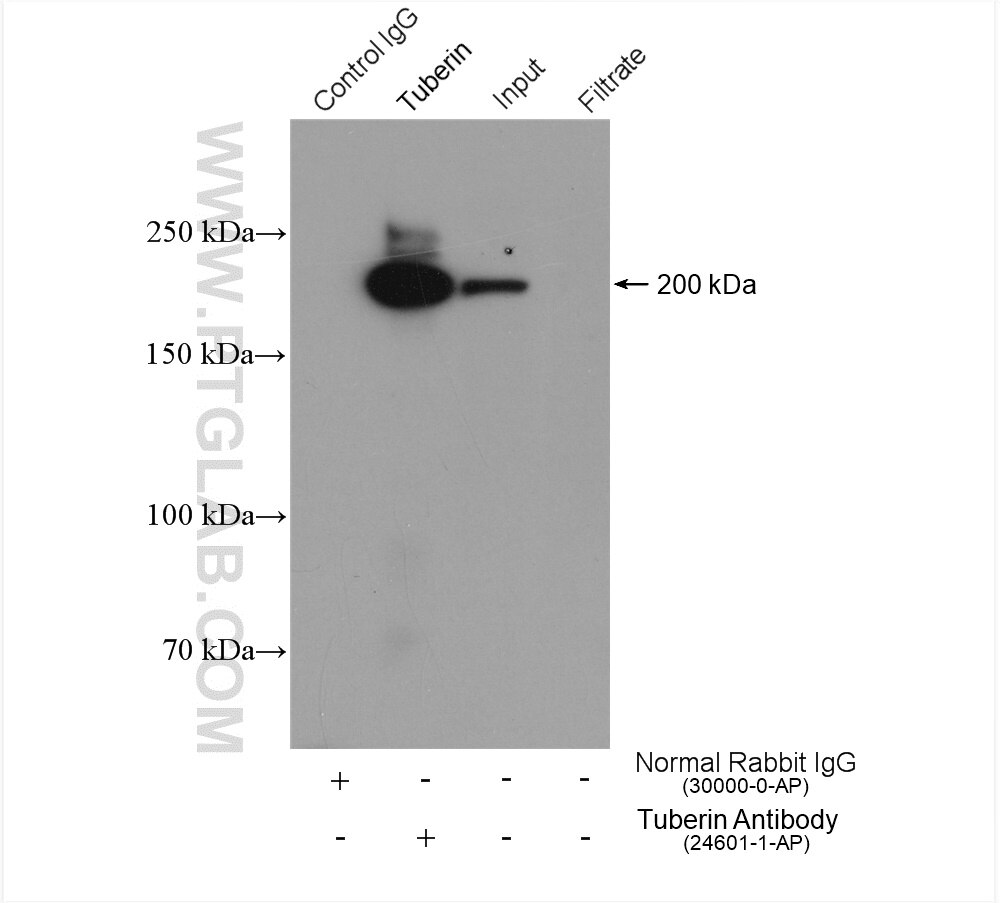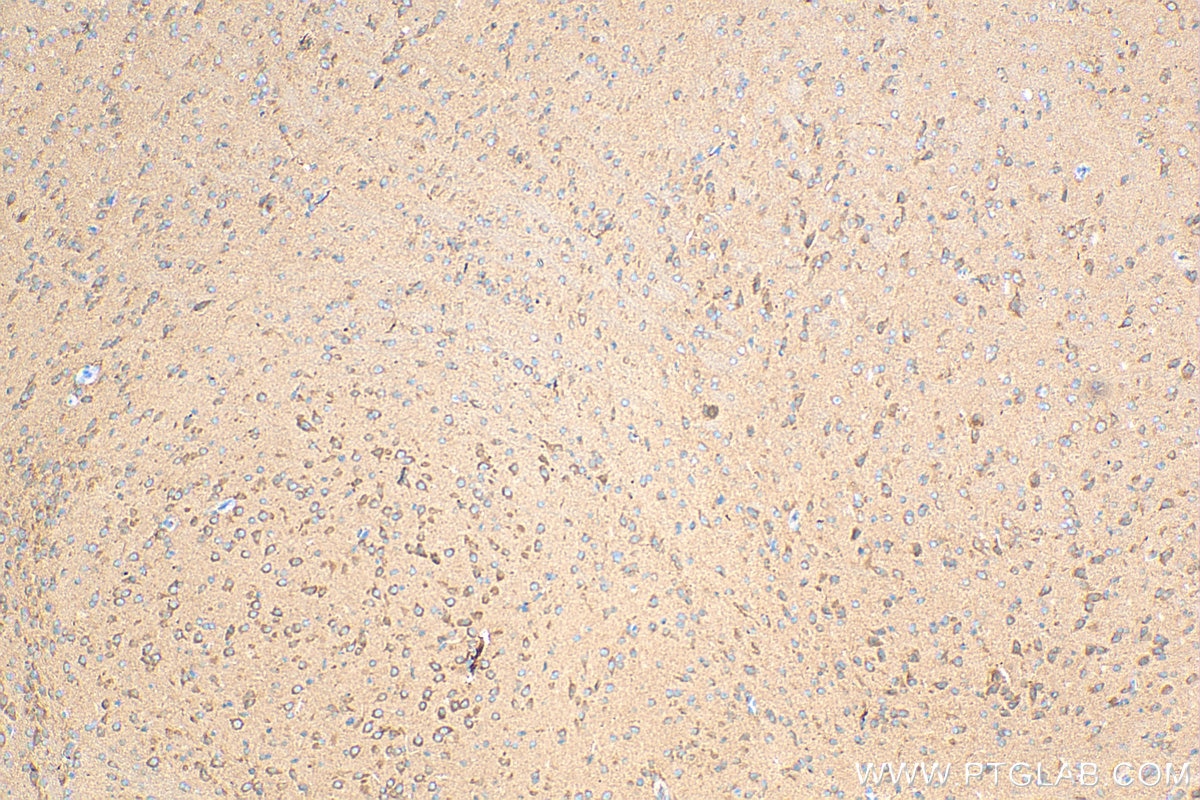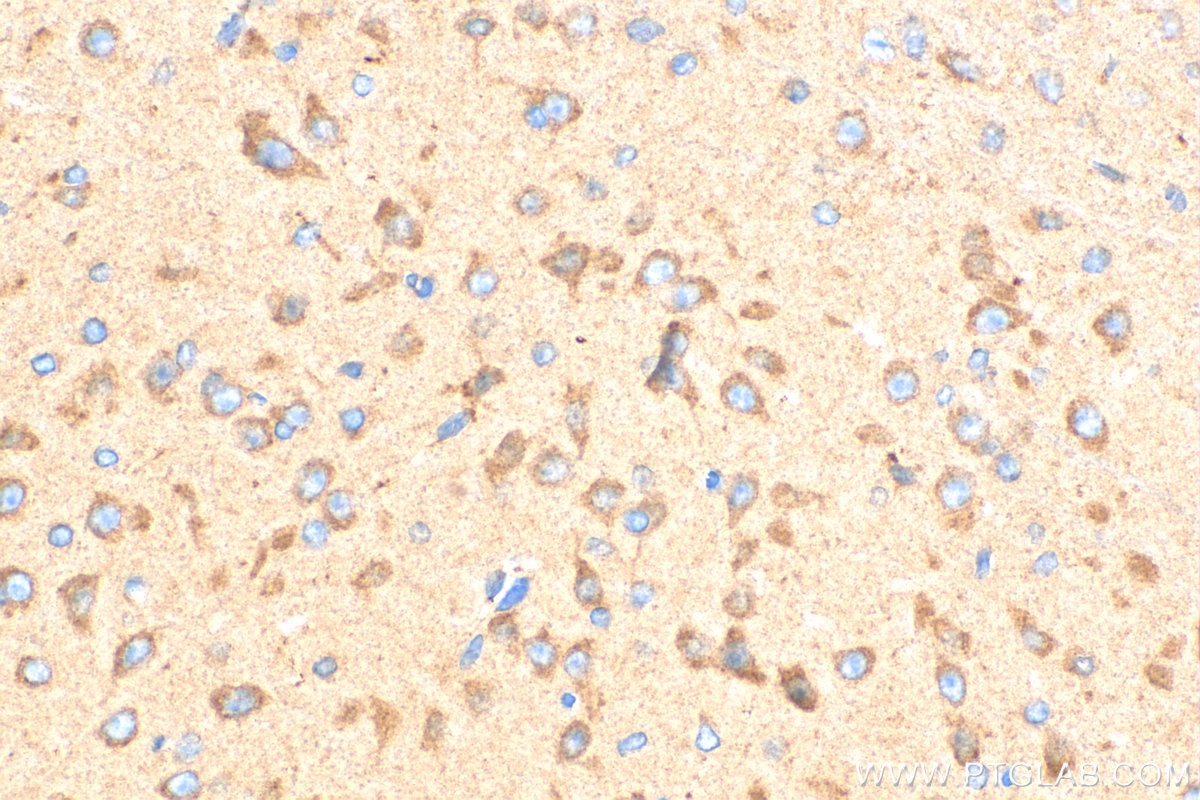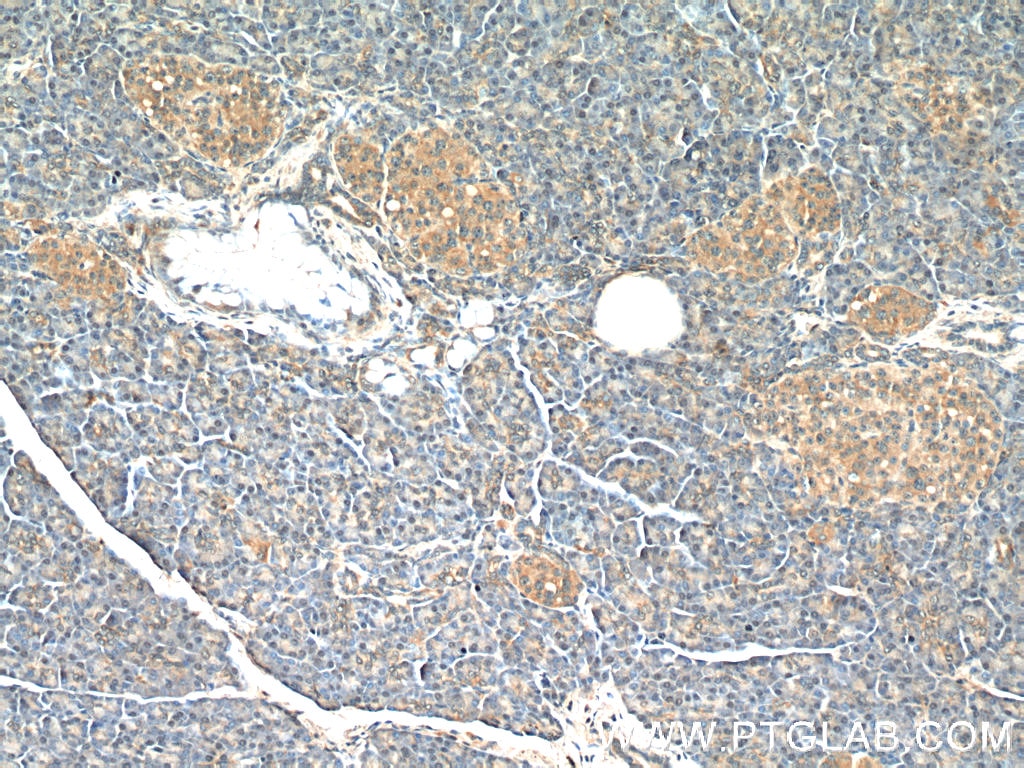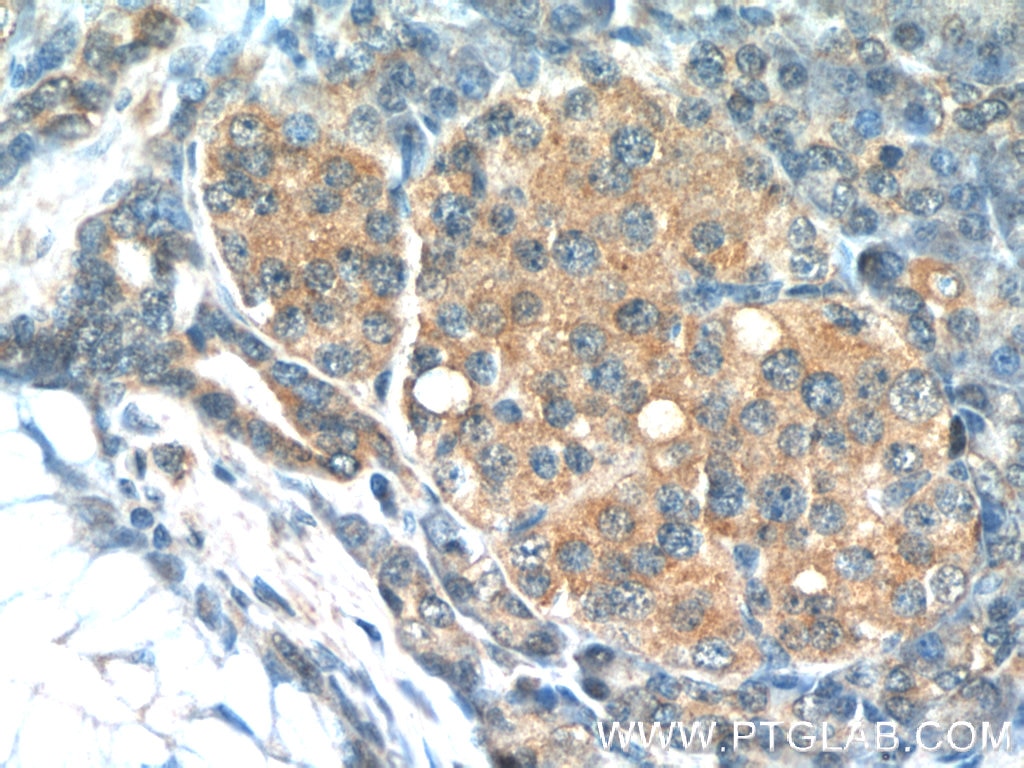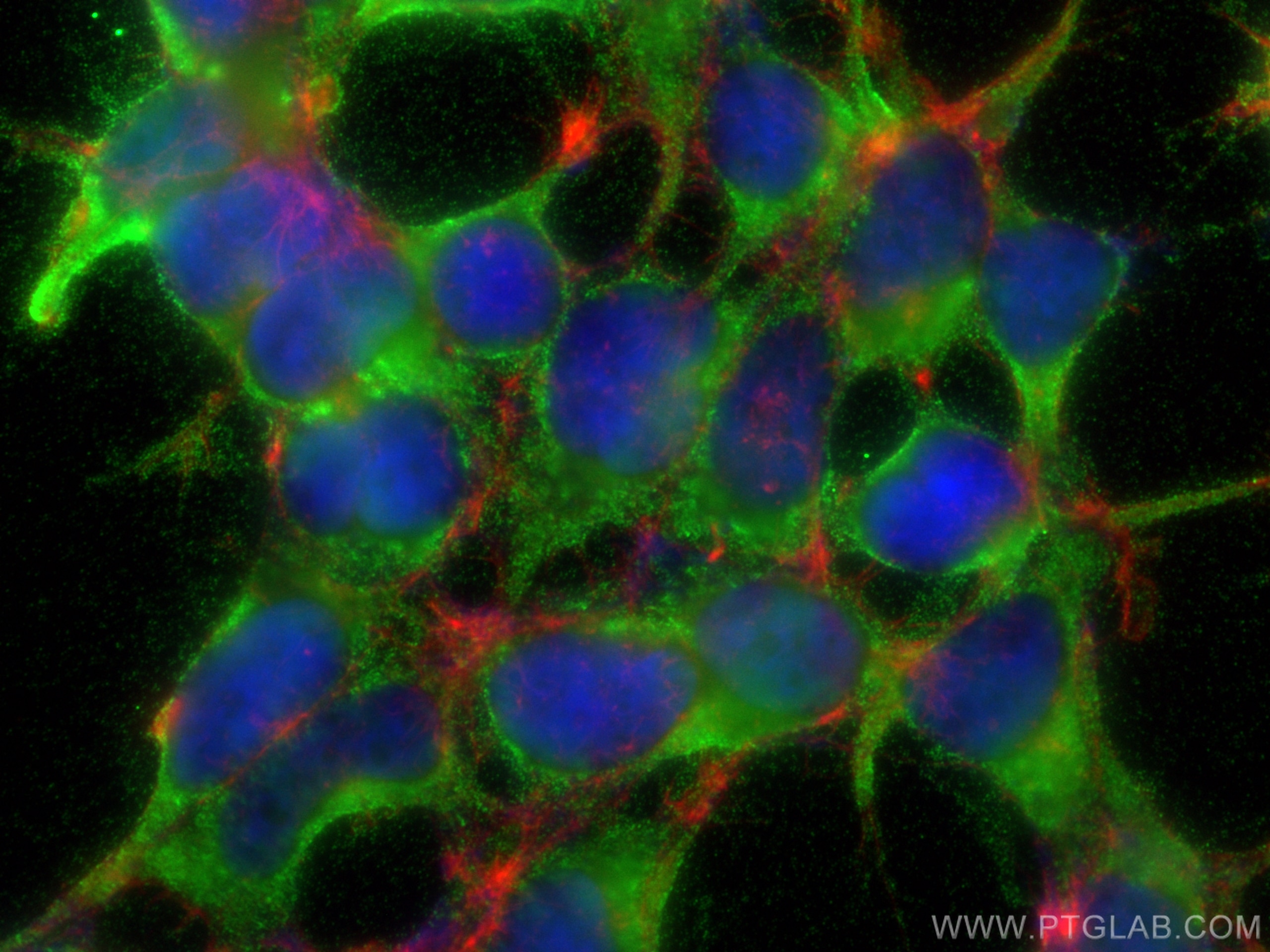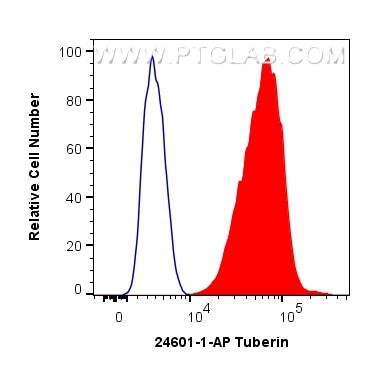Anticorps Polyclonal de lapin anti-Tuberin/TSC2
Tuberin/TSC2 Polyclonal Antibody for WB, IP, IF, IHC, ELISA, FC (Intra)
Hôte / Isotype
Lapin / IgG
Réactivité testée
Humain, rat, souris
Applications
WB, IHC, IF/ICC, FC (Intra), IP, ELISA
Conjugaison
Non conjugué
N° de cat : 24601-1-AP
Synonymes
Galerie de données de validation
Applications testées
| Résultats positifs en WB | cellules HEK-293, cellules HeLa, cellules K-562, cellules PC-3, tissu cérébral de rat, tissu cérébral de souris |
| Résultats positifs en IP | cellules SH-SY5Y, |
| Résultats positifs en IHC | tissu cérébral de souris, tissu pancréatique humain il est suggéré de démasquer l'antigène avec un tampon de TE buffer pH 9.0; (*) À défaut, 'le démasquage de l'antigène peut être 'effectué avec un tampon citrate pH 6,0. |
| Résultats positifs en IF/ICC | cellules HEK-293, |
| Résultats positifs en FC (Intra) | cellules HeLa |
| Résultats positifs en cytométrie | cellules HeLa |
Dilution recommandée
| Application | Dilution |
|---|---|
| Western Blot (WB) | WB : 1:1000-1:8000 |
| Immunoprécipitation (IP) | IP : 0.5-4.0 ug for 1.0-3.0 mg of total protein lysate |
| Immunohistochimie (IHC) | IHC : 1:400-1:1600 |
| Immunofluorescence (IF)/ICC | IF/ICC : 1:200-1:800 |
| Flow Cytometry (FC) (INTRA) | FC (INTRA) : 0.40 ug per 10^6 cells in a 100 µl suspension |
| Flow Cytometry (FC) | FC : 0.40 ug per 10^6 cells in a 100 µl suspension |
| It is recommended that this reagent should be titrated in each testing system to obtain optimal results. | |
| Sample-dependent, check data in validation data gallery | |
Applications publiées
| WB | See 7 publications below |
Informations sur le produit
24601-1-AP cible Tuberin/TSC2 dans les applications de WB, IHC, IF/ICC, FC (Intra), IP, ELISA et montre une réactivité avec des échantillons Humain, rat, souris
| Réactivité | Humain, rat, souris |
| Réactivité citée | Humain |
| Hôte / Isotype | Lapin / IgG |
| Clonalité | Polyclonal |
| Type | Anticorps |
| Immunogène | Tuberin/TSC2 Protéine recombinante Ag18133 |
| Nom complet | tuberous sclerosis 2 |
| Masse moléculaire calculée | 1807 aa, 201 kDa |
| Poids moléculaire observé | 200 kDa |
| Numéro d’acquisition GenBank | BC150300 |
| Symbole du gène | TSC2 |
| Identification du gène (NCBI) | 7249 |
| Conjugaison | Non conjugué |
| Forme | Liquide |
| Méthode de purification | Purification par affinité contre l'antigène |
| Tampon de stockage | PBS avec azoture de sodium à 0,02 % et glycérol à 50 % pH 7,3 |
| Conditions de stockage | Stocker à -20°C. Stable pendant un an après l'expédition. L'aliquotage n'est pas nécessaire pour le stockage à -20oC Les 20ul contiennent 0,1% de BSA. |
Informations générales
TSC2, also named as TSC4, FLJ43106 and LAM, acts as a GTPase-activating protein (GAP) for the small GTPase RHEB, a direct activator of the protein kinase activity of mTORC1. In complex with TSC1, TSC2 inhibits the nutrient-mediated or growth factor-stimulated phosphorylation of S6K1 and EIF4EBP1 by negatively regulating mTORC1 signaling. TSC2 implicated as a tumor suppressor. It is involved in microtubule-mediated protein transport, but this seems to be due to unregulated mTOR signaling. TSC2 stimulates weakly the intrinsic GTPase activity of the Ras-related proteins RAP1A and RAB5 in vitro. Mutations in TSC2 lead to constitutive activation of RAP1A in tumors. Mutations in either TSC2 or the related TSC1 (hamartin) gene cause tuberous sclerosis complex (TSC), an autosomal dominant disorder characterized by development of multiple, widespread non-malignant tumors.
Protocole
| Product Specific Protocols | |
|---|---|
| WB protocol for Tuberin/TSC2 antibody 24601-1-AP | Download protocol |
| IHC protocol for Tuberin/TSC2 antibody 24601-1-AP | Download protocol |
| IF protocol for Tuberin/TSC2 antibody 24601-1-AP | Download protocol |
| IP protocol for Tuberin/TSC2 antibody 24601-1-AP | Download protocol |
| Standard Protocols | |
|---|---|
| Click here to view our Standard Protocols |
Publications
| Species | Application | Title |
|---|---|---|
Immunity 25-Hydroxycholesterol regulates lysosome AMP kinase activation and metabolic reprogramming to educate immunosuppressive macrophages | ||
Research (Wash D C) The FTO Mediated N6-Methyladenosine Modification of DDIT4 Regulation with Tumorigenesis and Metastasis in Prostate Cancer | ||
Eur Rev Med Pharmacol Sci Effect of STAT3 mediated epigenetic regulation in pre-eclampsia: an analysis of trial data. | ||
J Oncol Oleanolic Acid Induces Autophagy and Apoptosis via the AMPK-mTOR Signaling Pathway in Colon Cancer. | ||
NPJ Breast Cancer Resistance to anti-HER2 therapy associated with the TSC2 nonsynonymous variant c.4349 C > G (p.Pro1450Arg) is reversed by CDK4/6 inhibitor in HER2-positive breast cancer | ||
Elife A cleaved METTL3 potentiates the METTL3-WTAP interaction and breast cancer progression |
